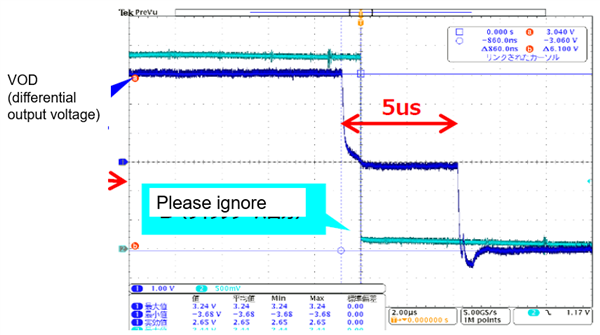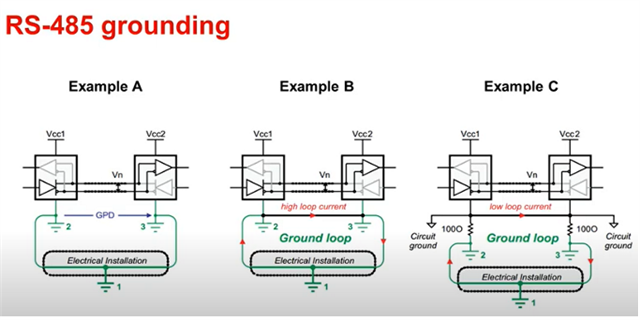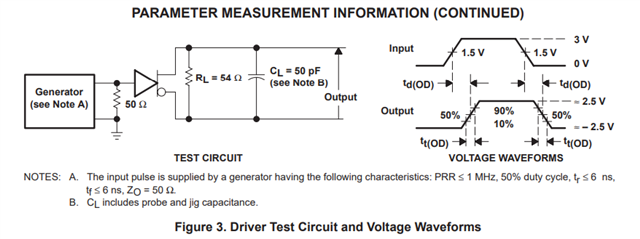Hi Experts,
When the input of driver transients from high to low or low to high, there is about 5us idle state on Vod like below.

Is it expected behavior?
Regards,
Uchikoshi
This thread has been locked.
If you have a related question, please click the "Ask a related question" button in the top right corner. The newly created question will be automatically linked to this question.
Hi Experts,
When the input of driver transients from high to low or low to high, there is about 5us idle state on Vod like below.

Is it expected behavior?
Regards,
Uchikoshi
Hi Uchikoshi,
I will consult an engineer about this question tomorrow by 3pm.
Regards,
Tyler
Uchikoshi,
Would you happen to know the data rate of the input signal? What is your supply voltage to the device? How are you terminating the bus? Is there an available schematic on hand?
Regards,
-Tyler
Hi Uchikoshi,
After reviewing the schematic and waveforms, I have come up with a couple of suggestions.
I still do not have the signal frequency from the data you have given. I would assume in the scope captures since the differential voltage is hanging for roughly 5us that the signal rate is in the Hz - kHz range. So the signal rate is quite low. Lower signal rates may indicate that you are trying to communicate across a long length of cabling.
How much cable is between SN75179 and the AM26LV32CDR? If there is a lot of cable between these two devices, I could see how a ground potential difference may be significant enough to effect the data cables, or even cause the transceivers to fail. This GPD could also affect the voltage across PTZ15B Zener diodes due to common mode voltage differences.
Consider this grounding diagram:



Hi Tyler,
This seems to be caused when driver input signal transition time takes several hundreds micro second. I sent the waveform in off-line.
Please check it.
Regards,
Uchikoshi